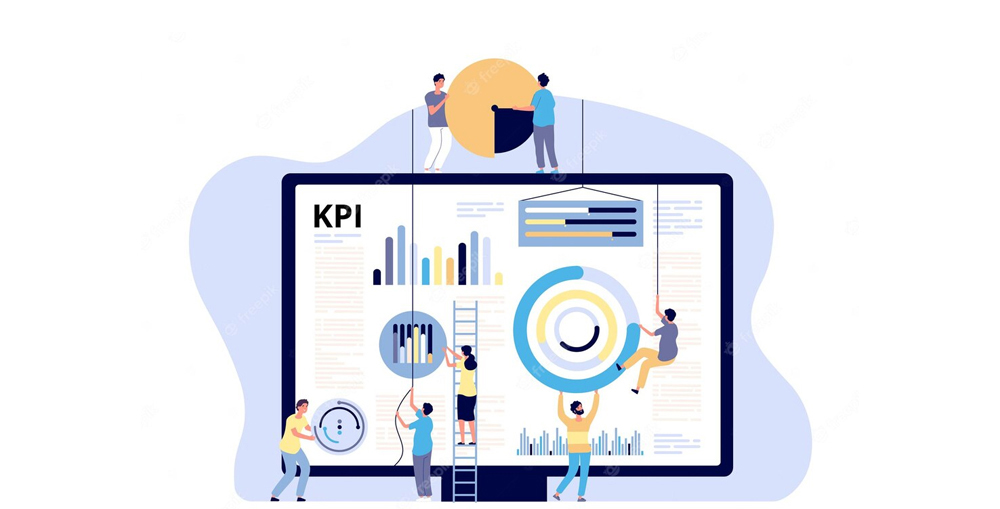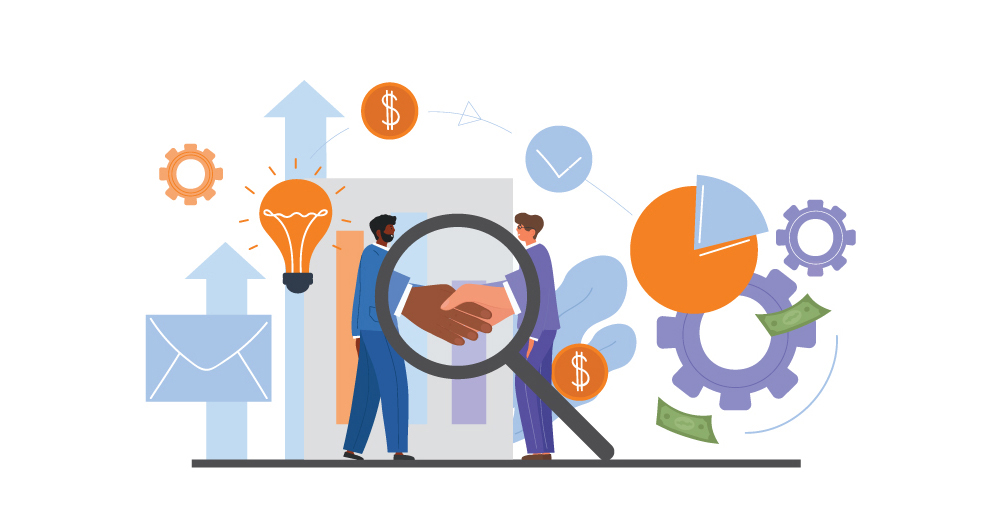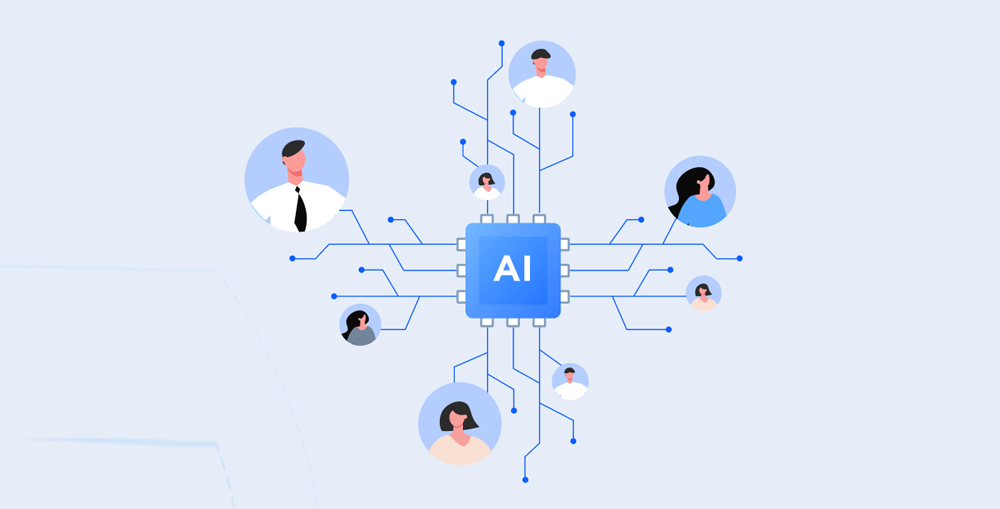In the era where digitalization is reshaping each and every aspect of our work and personal life, the performance management systems stand at forefront of business transformation. Performance management is a framework which provides a systematic approach to monitor and improve the performance of any organization. The workforce of any business or organization is its core strength, if your workforce is performing at its best you can produce more and high quality outcome by investing less resources. Think of the employees at a customer service center, one employee is able to serve 45 customers in a shift whereas another is only able to serve 20 – 25 customers a day. How would this impact your operational cost? The performance management not only streamline human resource processes, but it also help enhancing employee productivity and satisfaction. Businesses operating in Dubai, Sharjah, Abu Dhabi and other regions of UAE are well aware of the fact that the employee retention is one of the biggest challenge of modern day business landscape.
The high employee turnaround causes a lot many problems and indicates even more problems. Therefore in order to keep your workforce engaged and to offer them a productive organizational culture businesses turn towards modern performance management systems. A modern performance management system is a digital tool which consists of software application, analytical tools, and techniques to enhance performance and employee satisfaction. In this blog we will discuss how a modern performance management system can be game changer for your business.

What is Performance Management?
By definition, the performance management is a business process which involves continuous communication and feedback between the managers/supervisors and the employees. Traditionally the performance cycle is one year long, and at the end of each year the managers sits with the employees, interview them, get their feedback, analyze their progress towards set goals and objectives and on the bases of these feedbacks, reviews and progress manager determine how well or poorly an employee performance throughout the year. The primary goal of performance management is to align employee objectives with high-level organizational goals. The performance management system not only aligning employee objectives with organizational goals but it also ensures that the employee develop and become more skilled while ensuring a steady and sustainable business growth. The performance management system provides tools and streamline processes which help businesses create more effective employee objectives, while utilizing a systematic approach and digital framework to closely monitor employee performance and ensure every employee achieve their goals that contributes to the high-level organizational goal and objectives.

What are the Drawbacks of Traditional/Manual Performance Management?
The traditional performance management system are manual, usually following a one year long performance cycle, which means the appraisal is done at the end of very year. This process in itself is outdated, and incapable of meeting the modern needs of the businesses. However, there are several drawbacks of using traditional/manual performance management methods such as:
- Lack of Flexibility: The traditional performance management methods are annual or bi-annual which lacks the flexibility require to deal with dynamic job roles and frequent changes in the goals and objectives, which are crucial for course correction.
- Personal Bias: One of the biggest drawback of traditional/manual performance management process is that it is prone to human bias. Sometimes managers have bias towards certain employees, but most of the times employees think that their evaluation is not fair due to manager bias, hence reduced the overall fairness, accuracy and transparency of the system.
- Limited Feedbacks: Since the manager and the employees are not engaged throughout the year, the reviews and feedbacks are also infrequent, therefore it forms a gap between the needs and the actions hindering the improvement process and reduce the overall efficacy of the system.
- Lack of Employee Engagements: The employees are very less engaged in the performance management activities as most of the decisions are unilateral and employees have absolutely no or very little say over the policy making and even on their own development processes.
- Time-Consuming: The traditional or manual performance management process is very time consuming, majorly based on manual reviews and feedback processes involving a lot of paperwork and manual analysis. Furthermore the HR and employees both have to spare a lot of time for these activities.
- Unsatisfied Employees: The traditional/manual performance management system lacks the ability to satisfy employees because most of the employees and the HR leader doesn’t trust the system and are very skeptic. Poor communication, infrequent feedbacks and lack of engagement lead to further distrust and failed to satisfy employees, unsatisfied employees tend to leave sooner or later, causing more problems for the HR and the business as well.
The modern day employees wants instant gratification, they need more frequent feedback, higher contribution to the process and demand higher engagement. Which is not possible with traditional/manual performance management systems. Therefore businesses and organizations are turning toward digital performance management systems.

What is a Digital Performance Management System?
A digital performance management system is a technology-based solution that help businesses implement and adopt to modern performance management processes and techniques. The digital performance management systems are the latest trend in the rapidly evolving performance management sector. A business’s success very much depends on the performance of its employees, in order to boost this performance businesses implement several technologies and adopt to modern practices which help them make their employee more productive, happy and satisfied. A digital performance management system not only meet the modern performance management needs, but is proven to be many times more effective and accurate from the traditional/manual performance management practices. The digital performance management systems comes with a centralized software application and customizable tools which help businesses and organizations to implement modern performance management practices as per their needs and help them boost employee productivity with better monitoring, evaluation, transparent and accurate analytical and software tools. In this blog we will discuss the emerging performance management system features and top trends.

Challenges Businesses can Overcome with a Digital Performance Management System
A digital performance management system can address several challenges modern day business are facing. It provides a comprehensive framework and support tools to improve the efficacy and impact of the performance management process. Here are some common challenges of the traditional methods which modern digital performance management system can easily overcome:
- Continuous and Real-time Feedback: The modern digital performance management systems offer continuous and real-time feedback data. The continuous feedback and real-time data increase managers’ visibility enabling them to take timely actions and course correction.
- Informed Decisions: The modern performance management systems offer a variety of monitoring tools and real-time updates, enabling managers to quickly identify the obstacles and problems. Comprehensive and customizable reports enable data-driven decisions and timely actions.
- Digitalization and Automation: The modern performance management system comes with a highly effective performance management software which digitalized several performance management processes, making it more effective and hustle free. The digitalization also drive automation lifting up the heavy workload from the HR team and managers.
- Flexibility and Adoptability: Modern performance management systems heavily rely on a software tools which offers great many features and customization to make the system more flexible and adoptable. Businesses can adopt to emerging needs and changes with in-built tools in a totally seamless manner.
- Employee Engagement: The modern performance management system offers variety of user interfaces and dashboards for various management levels and job roles. Intuitive user interfaces engage employees in their performance management activities and also streamline communication which enhance employee satisfaction.
- Effective and Efficient: The digital performance management systems are more effective, thanks to the digitalization and the automation it brings along. Furthermore the in-built tools, centralized management framework, real-time monitoring and data updates make performance management process much more efficient.
- Higher Employee Development: The digital performance management systems offer in-depth insight to employee performance and provide advanced tools for career planning, employee development programs and skill enhancement drives. All these tools help increasing employee satisfaction and also raise retention rate.
Businesses can completely transform the way they conduct their performance management by implementing a modern digital performance management system. It is not just an upgrade to modern technology but it provides a systematic framework to gradually boost the performance and productivity enabling businesses and organizations to leverage the true potential of their workforce.

How Automation and AI is Redefining the Performance Management
The Human Resource is one of the essential business function. Without a high-performing HR a business can never achieve its desired goals and objectives. A digital performance management system is a tool which not only help HR team but also aid administration and provide higher management with deep insights, better understanding of internal process, workforce capabilities and various aspects of growth and scalability. The digitalization drives automation and with the advancement of the technology and AI or Artificial Intelligence businesses are boosting their operational and functional capabilities. The integration of digital and technology-driven tools empowered by advanced algorithms and artificial intelligence businesses can greatly boost their performance and capabilities. Traditionally the performance management is limited to annual or bi-annual reviews, paper-pen based feedback forms, subjective assessments and manual work.
The modern performance management software equipped with AI and advanced analytical tools are completely reshaping the performance management. Businesses can have real-time reporting, behavioral analysis, technical analysis, and various analysis in intuitive performance monitoring dashboards and above all the data is updated in real-time. All these features help management quickly identify and rectify problems. This ensures that each and every employee is fully aligned with the high-level organization goals and objectives.

What are they Key Advantages of a Digital Performance Management System?
As I have mentioned above the digital performance management system can help businesses overcoming several challenges of traditional/manual performance management methods, the digital performance management system offers several benefits which further improve performance and help businesses gain a huge competitive advantage by achieving highest possible operational and administrative efficiency. Here are key advantages of a digital performance management system:
- Align Employees with Business Goals: Aligning employees with business goals is crucial for the success. For that the most important thing is to be able to create individual goals and objectives that positively contributes to the high-level organizational goals and objectives. It is also important to communicate those goals and objectives with at most clarity to create a purpose-driven workforce who knows what they are doing, why they are doing it and what do they will achieve by success. A digital performance management system offers specialized tools to align employees with the high-level business goals along with real-time monitoring tools to keep employee aligned with the business goals through the performance cycle.
- Enhanced Feedback and Reviews: There are several methods businesses use to improve the quality of the feedback and reviews. These feedback are reviews are absolutely essential for making crucial decisions and defining employees’ career path. Therefore adopting to 360 degree review or 720 degree reviews could provide a much deeper insight to employees’ performance as well as the performance of the managers and even higher management. All these features help highlighting the factors that are hindering performance and also provide valuable insight to take decisive actions and strategic decisions to rectify these problems.
- Better Investments in Employee Development: Businesses are investing huge amount of money and efforts in employee development programs. However, without an accurate and deeper understanding of employee’s strengths and weaknesses, the employee development programs failed to deliver desired results. The digital performance management system provides full 360 degree view of employee strengths, weaknesses and also the context of their performance. All these tools help businesses to design employee development, up-skilling and reskilling programs with much higher impact which later contributes to the overall success.
- Higher Focus on Contextual Performance Management: Businesses are utilizing digital performance management systems to increase their focus on the contextual performance management. The major difference between the contextual performance management and traditional performance management is that rather than focusing on regular performance metrics the contextual performance management also includes the environment conditions in which employee operates, the team dynamics, employee skillset, and even the external factors such as personal and economic conditions of the employees as well. This level of information skyrocket the accuracy, fairness and transparency of the performance management system and greatly improve employee satisfaction.
- Reward and Recognition: Businesses are realizing the importance of reward and recognition. It is not just the monetary gain that the employee seeks the most, but only appreciation and proper acknowledgement of their achievement could greatly increase their happiness and satisfaction. The modern performance management systems offer a comprehensive framework to design a successful reward and recognition program. Instead of one-fit-all businesses are leaning towards the personalized rewards, hence the digital performance management system makes it easier to help designing a reward and recognition program which suits employee’s expectations. The modern performance management system help management greatly boost motivation and drive performance while maintaining maximum level of engagement.
A modern performance management system is capable of boosting productivity and performance while ensuring employee satisfaction and higher retention rate. The digital performance management systems also help in recruiting, onboarding and off-boarding activities keeping the overall morale high and ensuring highest level of transparency and accuracy in the performance management system.

Conclusion
Businesses in Dubai, Sharjah, Abu Dhabi and all around the UAE are well aware of the importance of employee retention and employee satisfaction. Businesses are using various different performance management systems and methods to do the same. However, with the passage of time the traditional/manual performance management systems are losing their ability to make desired impact. Both managers and employees are losing trust over traditional performance management methods. Therefore business are turning towards the more modern and advanced digital performance management systems. The annual or bi-annual reviews are replaced by the more in-depth contextual performance management and continuous feedbacks. Businesses are increasing employee engagements in the decision making, goal setting and various strategically important processes. All this is possible due to the advanced capabilities and features of a digital performance management system. A centralized management framework with personalized dashboards and real-time data, businesses can effectively overcome all challenges of past. Furthermore the easy customization, flexible control integration with AI and advanced tools can greatly improve the control and visibility and help management make their performance management process more effective, impactful and fruitful.
In this blog we have discussed all major aspects of the modern performance management. If you want to learn more about the subject or if you want our help to build and implement a customized performance management system for your business, please feel free to contact us through our Contact Us page or leave a comment in the comment box below and we will get in touch with you soon.